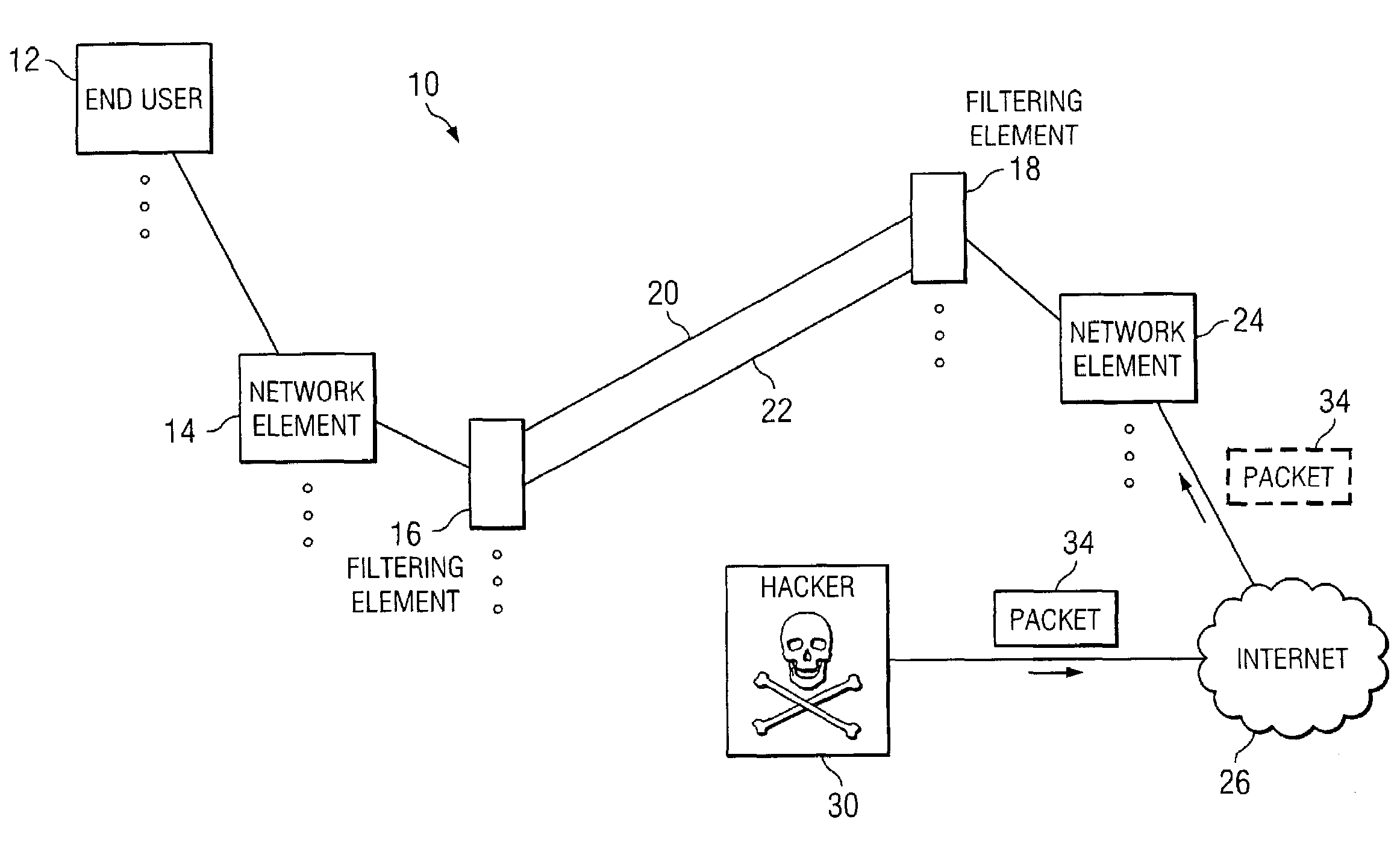System and method for communicating packets in a network environment
- Summary
- Abstract
- Description
- Claims
- Application Information
AI Technical Summary
Benefits of technology
Problems solved by technology
Method used
Image
Examples
Embodiment Construction
[0011]FIG. 1 is a simplified block diagram of a communication system 10 for communicating data or information in a network environment. Communication system 10 may include an end user 12, multiple network elements 14 and 24, multiple filtering elements 16 and 18, and an Internet 26. Filtering elements 16 and 18 may be coupled to each other via a set of communication links 20 and 22. In addition, communication system 10 may include a hacker 30 who may be attempting to send an erroneous packet 34 (or misrepresent the origin of packet 34) through Internet 26 and to network element 14. FIG. 1 may be generally configured or arranged to represent any communication architecture capable of exchanging packets in a network environment. In addition, communication system 10 may include any suitable networking protocol or arrangement that provides a communicative platform for communication system 10. Such architectures may include, for example, first generation, 2G, and 3G architectures that pro...
PUM
 Login to View More
Login to View More Abstract
Description
Claims
Application Information
 Login to View More
Login to View More - R&D
- Intellectual Property
- Life Sciences
- Materials
- Tech Scout
- Unparalleled Data Quality
- Higher Quality Content
- 60% Fewer Hallucinations
Browse by: Latest US Patents, China's latest patents, Technical Efficacy Thesaurus, Application Domain, Technology Topic, Popular Technical Reports.
© 2025 PatSnap. All rights reserved.Legal|Privacy policy|Modern Slavery Act Transparency Statement|Sitemap|About US| Contact US: help@patsnap.com



